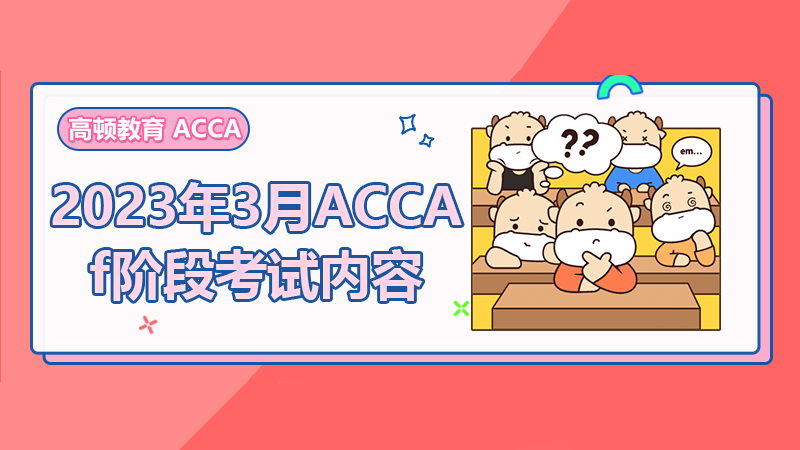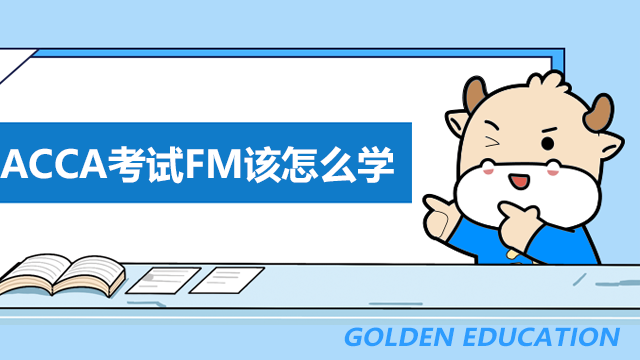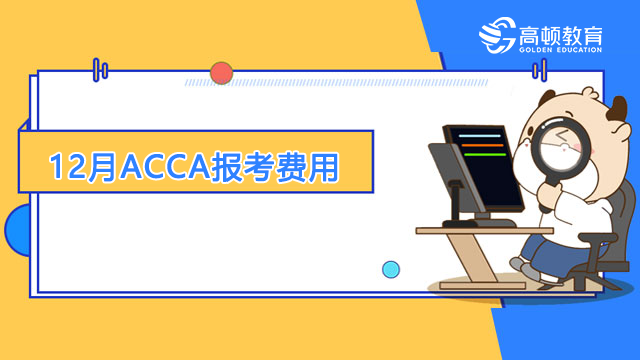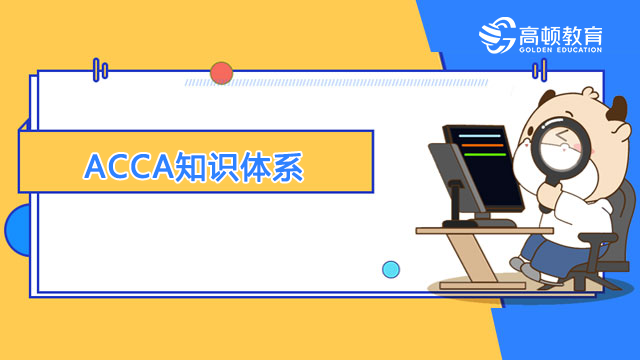ACCA考试F8审计重要知识点讲义
来源:
高顿网校
2015-09-28
贴心小棉袄高顿网校小编给大家整理了F8知识点讲义,希望对大家的ACCA考试有所帮助!
ISA 315 (REVISED), IDENTIFYING AND ASSESSING THE RISKS OF MATERIAL MISSTATEMENT THROUGH UNDERSTANDING THE ENTITY AND ITS ENVIRONMENT
One of the major revisions of ISA 315 relates to the inquiries made by external auditors of the internal audit function since internal auditors have better knowledge and understanding of the organisation and its internal control. This article addresses and highlights the components of internal control.
The International Auditing and Assurance Standards Board (IAASB) issues International Standard on Auditing (ISA) for international use. From time to time, ISAs are revised to provide updated standards to auditors. In order to enhance the overall quality of audit, IAASB published a consultation draft on a proposed revision to ISA 315. The objective in revising ISA 315 is to enhance the performance of external auditors by applying the knowledge and findings of an entity’s internal audit function in the risk assessment process, and to strengthen the framework for evaluating the use of internal auditors work to obtain audit evidence.
In March 2012, ISA 315 (Revised) was approved and released. One of the major revisions of ISA 315 relates to the inquiries made by external auditors of the internal audit function since internal auditors have better knowledge and understanding of the organisation and its internal control. This article addresses and highlights the components of internal control.
OBJECTIVES IN ESTABLISHING INTERNAL CONTROLS
Generally speaking, internal control systems are designed, implemented and maintained by the management and personnel in order to provide reasonable assurance to fulfil the objectives – that is, reliability of financial reporting, efficiency and effectiveness of operations, compliance with laws and regulations and risk assessment of material misstatement. The manner in which the internal control system is designed, implemented and maintained may vary with the entity’s business nature, size and complexity, etc. Auditors focus on both the audit of financial statements and internal controls that relates to the three objectives that may materially affect financial reporting.
In order to identify the types of potential misstatements and to determine the nature, timing and extent of audit testing, auditors should obtain an understanding of relevant internal controls, evaluate the design of the controls, and ascertain whether the controls are implemented and maintained properly.
The major components of internal control include control environment, entity’s risk assessment process, information system (including the related business processes, control activities relevant to the audit, relevant to financial reporting, and communication) and monitoring of controls.
CONTROL ENVIRONMENT
The control environment consists of the governance and management functions and the attitudes, awareness and actions of the management about the internal control. Auditors may obtain an understanding of the control environments through the following elements.
1. Communication and enforcement of integrity and ethical values It is important for the management to create and maintain honest, legal and ethical culture, and to communicate the entity’s ethical and behavioral standards to its employees through policy statements and codes of conduct, etc.
2. Commitment to competence It is important that the management recruits competent staff who possess the required knowledge and skills at competent level to accomplish tasks.
3. Participation by those charged with governance An entity’s control consciousness is influenced significantly by those charged with governance; therefore, their independence from management, experience and stature, extent of their involvement, as well as the appropriateness of their actions are extremely important.
4. Management’s philosophy and operating style Management’s philosophy and operating style consists of a broad range of characteristics, such as management’s attitude to response to business risks, financial reporting, information processing, and accounting functions and personnel, etc. For example, does the targeted earning realistic? Does the management apply aggressive approach where alternative accounting principles or estimates are available? These management’s philosophy and operating style provide a picture to auditors about the management’s attitude about the internal control.
5. Organisational structure The organisational structure provides the framework on how the entity’s activities are planned, implemented, controlled and reviewed.
6. Assignment of authority and responsibility With the established organisational structure or framework, key areas of authority and reporting lines should then be defined. The assignment of authority and responsibility include the personnel that make appropriate policies and assign resources to staff to carry out the duties. Auditors may perceive the implementation of internal controls through the understanding of the organisational structure and the reporting relationships.
7. Human resources policies and practices Human resources policies and practices generally refer to recruitment, orientation, training, evaluation, counselling, promotion, compensation and remedial actions. For example, an entity should establish policies to recruit individuals based on their educational background, previous work experience, and other relevant attributes. Next, classroom and on-the-job training should be provided to the newly recruited staff. Appropriate training is also available to existing staff to keep themselves updated. Performance evaluation should be conducted periodically to review the staff performance and provide comments and feedback to staff on how to improve themselves and further develop their potential and promote to the next level by accepting more responsibilities and, in turn, receiving competitive compensation and benefits.
With the ISA 315 (Revised), external auditors are now required to make inquiries of the internal audit function to identify and assess risks of material misstatement. Auditors may refer to the management’s responses of the identified deficiencies of the internal controls and determine whether the management has taken appropriate actions to tackle the problems properly. Besides inquiries of the internal audit function, auditors may collect audit evidence of the control environment through observation on how the employees perform their duties, inspection of the documents, and analytical procedures. After obtaining the audit evidence of the control environment, auditors may then assess the risks of material misstatement.
ENTITY’S RISK ASSESSMENT PROCESS
Auditors should assess whether the entity has a process to identify the business risks relevant to financial reporting objectives, estimate the significance of them, assess the likelihood of the risks occurrence, and decide actions to address the risks. If auditors have identified such risks, then auditors should evaluate the reasons why the risk assessment process failed to identify the risks, determine whether there is significant deficiency in internal controls in identifying the risks, and discuss with the management.
THE INFORMATION SYSTEM, INCLUDING THE RELEVANT BUSINESS PROCESSES, RELEVANT TO FINANCIAL REPORTING AND COMMUNICATION
Auditors should also obtain an understanding of the information system, including the related business processes, relevant to financial reporting, including the following areas:
The classes of transactions in the entity’s operations that are significant to the financial statements. The procedures that transactions are initiated, recorded, processed, corrected as necessary, transferred to the general ledger and reported in the financial statements.
How the information system captures events and conditions that are significant to the financial statements.
The financial reporting process used to prepare the entity’s financial statements.
Controls surrounding journal entries.
Understand how the entity communicates financial reporting roles, responsibilities and significant matters to those charged with governance and external – regulatory authorities.
CONTROL ACTIVITIES RELEVANT TO THE AUDIT
Auditors should obtain a sufficient understanding of control activities relevant to the audit in order to assess the risks of material misstatement at the assertion level, and to design further audit procedures to respond to those risks. Control activities, such as proper authorisation of transactions and activities, performance reviews, information processing, physical control over assets and records, and segregation of duties, are policies and procedures that address the risks to achieve the management directives are carried out.
MONITORING OF CONTROLS
In addition, auditors should obtain an understanding of major types of activities that the entity uses to monitor internal controls relevant to financial reporting and how the entity initiates corrective actions to its controls. For instance, auditors should obtain an understanding of the sources and reliability of the information that the entity used in monitoring the activities. Sources of information include internal auditor report, and report from regulators.
LIMITATIONS OF INTERNAL CONTROL SYSTEMS
Effective internal control systems can only provide reasonable, not absolute, assurance to achieve the entity’s financial reporting objective due to the inherent limitations of internal control – for example, management override of internal controls. Therefore, auditors should identify and assess the risks of material misstatement at the financial statement level and assertion level for classes of transactions, account balances and disclosures.
CONCLUSION
As internal auditors have better understanding of the organisation and expertise in its risk and control, the proposed requirement for the external auditors to make enquiries of internal audit function in ISA 315 (Revised) will enhance the effectiveness and efficiency of audit engagements. External auditors should pay attention to the components of internal control mentioned above in order to make effective and
efficient enquiries. An increase in the work of internal audit functions is also expected because of such proposed requirement.
Raymond Wong, School of Accountancy, The Chinese University of Hong Kong, and Dr Helen Wong, Hong Kong Community College, Hong Kong Polytechnic University
Reference ISA 315 (Revised), Identifying and Assessing the Risks of Material Misstatement Through Understanding the Entity and Its Environment.
高顿网校温馨提醒
各位考生,2015年ACCA备考已经开始,为了方便各位学员能更加系统地掌握考试大纲的重点知识,帮助大家充分备考,体验实战,高顿网校开通了全免费的ACCA题库(包括精题真题和全真模考系统),题库里附有详细的答案解析,学员可以通过多种题型加强练习。戳这里进入ACCA免费题库>>>
| ACCA网络课程 | 课程专业名称 | 讲师 | 试听 |
 85%的人正在学习该课程 85%的人正在学习该课程 | ACCA 全维度网课体验课程 实景课堂与独立录制 覆盖所有知识点,根据学习计划推进学习进度 | 高顿名师 |  |
 70%的人正在学习该课程 70%的人正在学习该课程 | ACCA网课全科卡(8.2折) 为零基础刚开始学习ACCA的学员特别定制 | 高顿名师 |  |
精彩推荐:
版权声明:本条内容自发布之日起,有效期为一个月。凡本网站注明“来源高顿教育”或“来源高顿网校”或“来源高顿”的所有作品,均为本网站合法拥有版权的作品,未经本网站授权,任何媒体、网站、个人不得转载、链接、转帖或以其他方式使用。
经本网站合法授权的,应在授权范围内使用,且使用时必须注明“来源高顿教育”或“来源高顿网校”或“来源高顿”,并不得对作品中出现的“高顿”字样进行删减、替换等。违反上述声明者,本网站将依法追究其法律责任。
本网站的部分资料转载自互联网,均尽力标明作者和出处。本网站转载的目的在于传递更多信息,并不意味着赞同其观点或证实其描述,本网站不对其真实性负责。
如您认为本网站刊载作品涉及版权等问题,请与本网站联系(邮箱fawu@gaodun.com,电话:021-31587497),本网站核实确认后会尽快予以处理。
点一下领资料
【整理版】ACCA各科目历年真题
真题高频考点,刷题全靠这份资料
下载合集
acca全科学习思维导图
梳理核心考点,一图看懂全部章节
下载合集
2023年acca考纲解析
覆盖科目重难点,备考按照计划走
下载合集
acca备考 热门问题解答
- acca考试怎么搭配科目?
-
建议优先选择相关联的科目进行搭配报考,这样可以提高备考效率,减轻备考压力,1、F1-F4:为随时机考科目,难度较低,这里可以自行随意选择考试顺序。2、F5-F9:如果你的工作的和财务会计或者审计有关、或者你比较擅长财务和审计的话,推荐先考F7和F8。你可以选择一起考ACCA考试科目F7和F8或者先考F7(8)再考F8(7),这就要取决你一次想考几门。3、P阶段:选修科目中,建议企业首选AFM!第二部分科目进行选择,如果AA和SBR掌握学生更好,可以通过选择AAA,如果SBL掌握的好,可以自己选择APM。
- acca一共几门几年考完?
-
acca一共有15门考试科目,其中有必修科目和选修科目,考生需要考完13门科目才能拿下证书。
- acca一年考几次?
-
acca一年有4次考试,分别是3月、6月、9月和12月,分季机考科目是采取的这类四个考季的模式,而随时机考则是没有这方面的时间规定限制,可以随报随考。
- acca的含金量如何?
-
ACCA证书的含金量是比较高的,从就业、能力提升、全球认可等角度来说,都是比较有优势的证书,其含金量主要表现在以下几个方面:1、国际化,认可度高;2、岗位多,就业前景好;3、缺口大,人才激励。
严选名师 全流程服务
其他人还搜了
热门推荐
-
acca《TX税务》2023-2024考纲变动高达10%,考生请注意! 2023-04-25
-
accaf阶段包括哪几门?这些重点你要注意! 2023-03-30
-
accaF阶段科目考完需要多久?难度大吗? 2023-03-28
-
accaF阶段科目详细信息介绍,这篇介绍全了! 2023-03-23
-
acca《AA审计与认证业务》详细介绍,一文完全了解! 2023-03-17
-
accaF阶段科目介绍,全科难度排序来了! 2023-03-15
-
accaF阶段学多久?学姐经验分享! 2023-03-10
-
accaF阶段科目先考哪个好?报考要注意什么? 2023-02-15
-
accaF8怎么学?备考经验总结! 2023-01-18
-
ACCA考试F阶段考试科目 2022-11-01
-
ACCAf1考试有原题多不多?如何查看考试成绩? 2022-10-19
-
ACCAf阶段的科目内容分别是什么?考试形式是什么? 2022-10-11
-
ACCAf阶段考试科目有哪些?学科内容都是什么? 2022-10-11
-
在上海读ACCA专业的就业前景如何?报名条件是什么? 2022-10-09
-
在上海读ACCA专业的就业前景如何?报名条件是什么? 2022-10-09
-
在上海读ACCA专业的就业前景如何?报名条件是什么? 2022-10-09
-
2023年ACCA考试报名条件是什么?考试报名流程是什么? 2022-09-26
-
2023年3月份考试ACCAf阶段的考试内容是什么?附答题技巧 2022-09-26
-
ACCAf1考试时间是怎么安排的?看完这篇你就知道了 2022-09-13
-
特许公认会计师基础阶段的考试内容是什么?考察什么内容? 2022-09-08
-
ACCA考试FM该怎么学?这份攻略请收好! 2022-09-08
-
ACCA专业的就业前景如何?报名条件是什么? 2022-08-26
-
ACCAf5到f9搭配如何搭配更好?附备考建议! 2022-08-26
-
ACCA要通过多少门才有用?如何申请会员证书? 2022-08-18
-
ACCAf1考试有原题多吗?如何查看考试分数? 2022-08-17
-
12月ACCA报考费用多少钱?报名截止日期什么时候? 2022-08-15
-
ACCA知识体系是什么?附备考攻略! 2022-08-15
-
9月ACCA前四科考试时间是什么时候?附考试攻略! 2022-08-15
-
9月ACCA的F2考试时间是什么时候?什么时候出成绩? 2022-08-12
-
ACCA考下来薪资有多少?考了ACCA有什么好处? 2022-08-08
 更多服务
更多服务







































